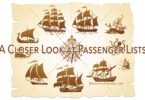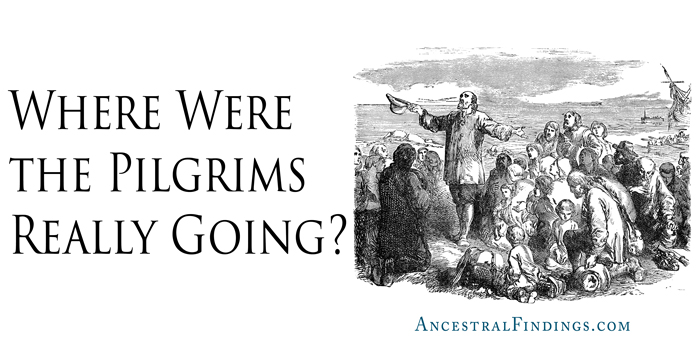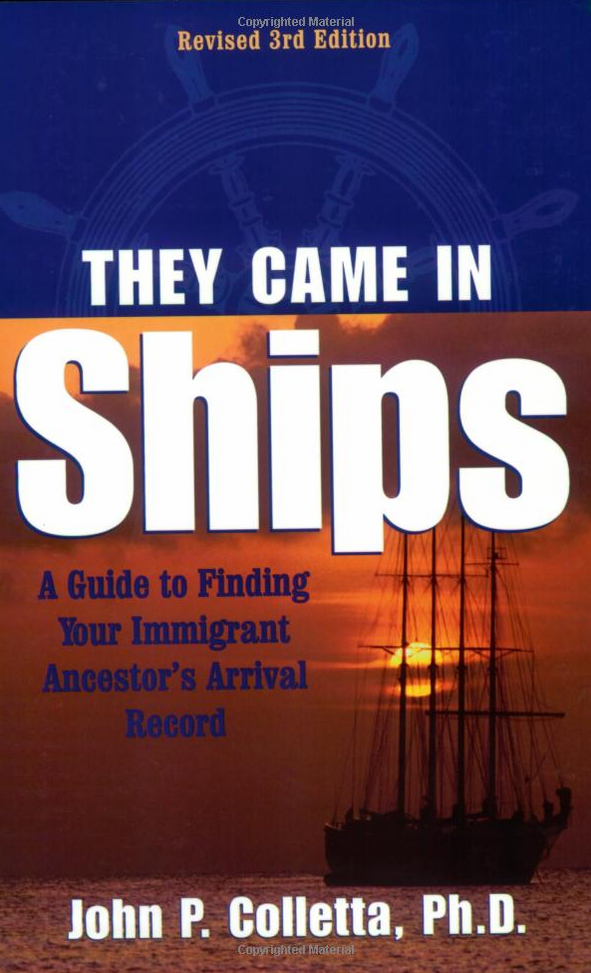Once you discover with as much accuracy as you can the place your ancestor was born or lived before immigrating, you can start your search for the ship, and the information on the ship’s manifest. If you know that your ancestor was in the United States by 1900, you can discover the year they came here in the 1900 US federal census. This information will be of enormous benefit in finding the ship they came on. It narrows down your search range considerably.
Even if you do not know the year your ancestor immigrated to the United States, you can make an educated guess. If they appear in any census records, find the earliest one in which they appear, then search for ships that arrived before that, but since your ancestor was born. Bear in mind that your ancestor may have come to the United States as a child with their parents, or may have come by themselves (or with siblings or friends, or even a young spouse and children) as a teenager or young adult. That is why you should search within the years since your ancestor was born, so you will be sure to find them. If you have a family legend or story that they came over as a grownup, then you can start looking for them around age fifteen or sixteen, as that was considered grown (or at least grown enough to be on one’s own) in those times.
There are two databases online where you can look for your immigrant ancestor if you have just a bit of basic information about them. The more information you have on them, the more you can narrow down your search to make it more accurate, and give you the confidence you’ve found the correct person and not someone with the same or a similar name. These databases are:
Castle Garden: Located at www.castlegarden.org, this is the website of the original port for processing immigrants in New York City. This port was used for processing immigrants from 1820 to 1892. You can enter your ancestor’s name and any other information you have on them here, and it will tell you if they came through Castle Garden, what year, what the name of their ship was, their age, their occupation, and any other information that may be on the ship’s manifest.
Ellis Island: Located at www.heritage.statueofliberty.org, this is the database for Ellis Island, the most famous of ports for processing immigrants. It took over from Castle Garden in 1892, and processed immigrants to the United States until 1957. You use this site just as you use the Castle Garden site, and it will provide you with similar information on your immigrant ancestors who were processed there.
If your ancestors did not come through the port of New York at New York City, they might not be on either of these databases. They could have come through Boston, Philadelphia, or several other less commonly used ports that also processed immigrants. To locate records for these ports, you can look up passenger records in compiled record books and genealogical databases online.
What You Will Find in Passenger Records
Once you find your immigrant ancestor in a ship’s passenger record, you may potentially find out a lot of things about them that you did not previously know. Depending on the ship, the year of immigration, the port of immigration, the country or port of origin, or even just who was processing immigrants that day, you may find just the most basic information on your ancestor allowed by the laws of the time, or you may find out practically their entire personal story to that point in their lives.
If you don’t find much information on your ancestor, there are plenty of other sources where you can look for it. If you are lucky, though, you may find a genealogical goldmine in the passenger records. This potential goldmine of information, along with knowing the ship your ancestor came on (so you can research the ship’s history and find out more about their voyage and experience as an immigrant) and the port they left and came to (which gives you even more information on their experience as an immigrant, you may discover any or all of the following things about your immigrant ancestor in passenger lists:
- Age
- Occupation
- Port of exit
- Port of entry
- Country of origin
- County, province, or town in their country of origin
- Who paid for their ticket
- If they had any money with them, and how much
- Whether they were traveling with other people or alone
- Name and address of a relative left behind
- Name, address, and relationship of person they’re going to stay with in America
- Name of the ship on which they sailed
- Their plans once they get settled in America
These are wonderful things to know about your immigrant ancestor. As you can imagine, a record on a ship’s passenger list that includes all of this information will tell you an extremely detailed story about your ancestor’s life before coming to America, as well as their reasons for coming, family relationships in the old country and the new, and what their voyage to America was like. You could almost write a book about your immigrant ancestor just on this information alone.
Even if you just get the basic information on your immigrant ancestor from the ship’s passenger list, that is still probably more information than you had on that person prior to finding the passenger list. At the very least, it should give you the bare minimum information you need to dig further into the records of their life in their home country, as well as their new lives in the United States. If the records don’t tell you an entire story, they at least give you the framework for building one. That alone makes them valuable.




